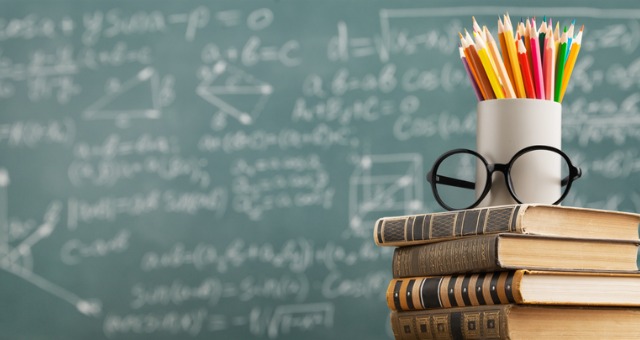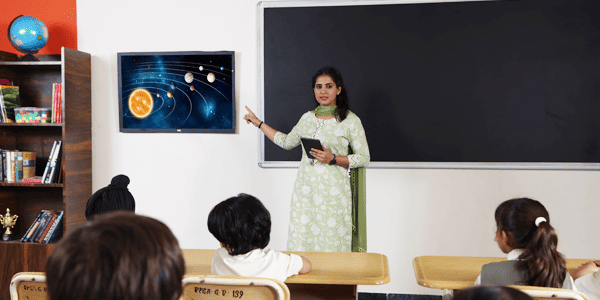Expert Tutors Offering Primary Science Tuition Singapore for All Grades
Expert Tutors Offering Primary Science Tuition Singapore for All Grades
Blog Article
Discovering the Different Mentor Approaches in Main Scientific Research Education Today
The landscape of primary science education and learning is progressing, with different training techniques getting prestige in modern class. Inquiry-based learning, hands-on experiments, and the combination of innovation are redefining exactly how educators engage young minds. In addition, joint approaches and separated instruction are being used to accommodate the diverse requirements of pupils, enhancing both interaction and understanding. As we examine these methodologies, questions occur regarding their efficiency and the implications for future educational methods. What might these changes in method mean for the next generation of students?
Inquiry-Based Knowing
Inquiry-Based Discovering (IBL) is a pedagogical method that motivates pupils to explore scientific ideas via wondering about, examination, and hands-on trial and error. This method stresses the function of students as active individuals in their learning, promoting essential reasoning and analytic abilities. By engaging with real-world concerns, pupils become curious and inspired, which improves their understanding of scientific principles.
In IBL, instructors work as facilitators, guiding trainees as they browse their queries instead of providing information straight. This student-centered technique permits for distinction, suiting various learning styles and paces. Pupils develop skills in developing theories, creating experiments, and analyzing information, which are crucial for scientific literacy.
Additionally, IBL fosters cooperation among trainees, motivating them to share findings and ideas. This cumulative questions advertises social abilities and a feeling of neighborhood within the classroom. The procedure of inquiry motivates durability, as students find out to accept failure as a stepping rock toward understanding.
Hands-On Experiments
Hands-on experiments are an important part of reliable scientific research education, enhancing the principles of inquiry-based discovering. These experiments enable trainees to engage straight with clinical concepts, cultivating a much deeper understanding with experiential learning. By adjusting materials and observing outcomes, young students can understand abstract concepts in concrete ways.
Such activities promote vital reasoning and problem-solving skills, as pupils hypothesize results, conduct experiments, and analyze outcomes. This process urges them to ask questions, improve their understanding, and establish a clinical mindset. Hands-on experiments can be customized to diverse knowing styles, making certain that all students have the opportunity to engage meaningfully with the web content.
Moreover, hands-on experiments commonly urge cooperation among peers, promoting team effort and interaction skills. Operating in groups enables trainees to share concepts, review searchings for, and learn from each other, which boosts their total instructional experience.
Incorporating hands-on experiments into the main science curriculum not only enhances the finding out atmosphere however likewise cultivates a lifelong interest in science. By actively taking part in their education and learning, pupils are most likely to develop a passion for scientific questions that expands past the classroom.

Innovation Assimilation
Incorporating modern technology right into key scientific research education and learning has actually come to be significantly essential in promoting trainee involvement and boosting discovering results. The use of digital tools, such as interactive simulations, online laboratories, and academic software application, offers students with chances to check out scientific ideas in cutting-edge ways. These resources help with a deeper understanding of complex subjects by enabling students to visualize and manipulate variables that would be not practical in a typical class setting.
Furthermore, innovation combination encourages individualized finding out experiences. Pupils can advance at their own rate, reviewing challenging principles with multimedia resources, which provide to various understanding designs. This versatility not only sustains specific growth however also grows recommended you read a sense of autonomy in students.
In addition, innovation works as a bridge to real-world science, linking students with present research and professional contributions. Access to clinical journals and online databases widens students' perspectives on clinical inquiry and cultivates vital thinking abilities.
Collaborative Understanding
Collaborative discovering plays a crucial role in main scientific research education and learning by promoting teamwork and communication abilities amongst students. This technique encourages learners to collaborate, share understanding, and engage in analytical, which improves their understanding of clinical principles. By joining team tasks, students learn to verbalize their ideas, listen to diverse perspectives, and work out remedies, all of which are crucial abilities in both real-world and scholastic contexts.

Study suggests that collaborative discovering can bring about increased motivation and involvement in science subjects, as students find pleasure in shared experiences (primary science tuition Singapore). Additionally, this technique prepares trainees for future collective undertakings, outfitting them with the skills necessary for reliable synergy in college and expert environments. Inevitably, accepting collaborative understanding in primary science education can significantly enrich the discovering experience and advertise a much deeper understanding of scientific query
Set Apart Guideline
Distinguished instruction can materialize in numerous methods, such as varying the web content, procedures, or items of discovering. Instructors might utilize tiered jobs that give varying degrees Discover More Here of intricacy, permitting pupils to function at their particular readiness levels. Additionally, adaptable grouping techniques can i thought about this promote cooperation among trainees with various capacities, fostering peer learning.
Assessment plays a crucial role in this technique, as it educates direction and helps instructors understand each student's one-of-a-kind requirements. Developmental assessments, such as observations and tests, can direct educators in changing their methods to improve finding out end results. primary science tuition Singapore. Eventually, by carrying out distinguished direction in key scientific research education, educators can cultivate a much more reliable and equitable knowing atmosphere, encouraging all trainees to reach their full potential in understanding scientific phenomena
Conclusion
In summary, the diverse teaching methods in primary scientific research education and learning, including inquiry-based discovering, hands-on experiments, modern technology combination, collective discovering, and set apart instruction, jointly add to an extra efficient knowing atmosphere. These approaches advertise vital reasoning, analytical abilities, and a much deeper comprehension of clinical ideas. By applying these strategies, educators can create encouraging and engaging classrooms that resolve the varied demands of trainees, inevitably promoting a long-lasting interest in scientific research and improving academic accomplishment.
Inquiry-Based Understanding (IBL) is an instructional method that motivates pupils to explore clinical ideas with doubting, examination, and hands-on trial and error.Collective discovering plays a crucial function in primary scientific research education and learning by promoting teamwork and communication abilities amongst students.Study suggests that joint learning can lead to raised motivation and interaction in scientific research topics, as trainees locate enjoyment in common experiences.In cultivating a comprehensive knowing environment, separated guideline arises as a key method to suit the varied requirements and capabilities of students in key science education. Inevitably, by applying distinguished guideline in main scientific research education and learning, educators can grow an extra effective and fair learning atmosphere, encouraging all students to reach their complete possibility in comprehending clinical phenomena.
Report this page